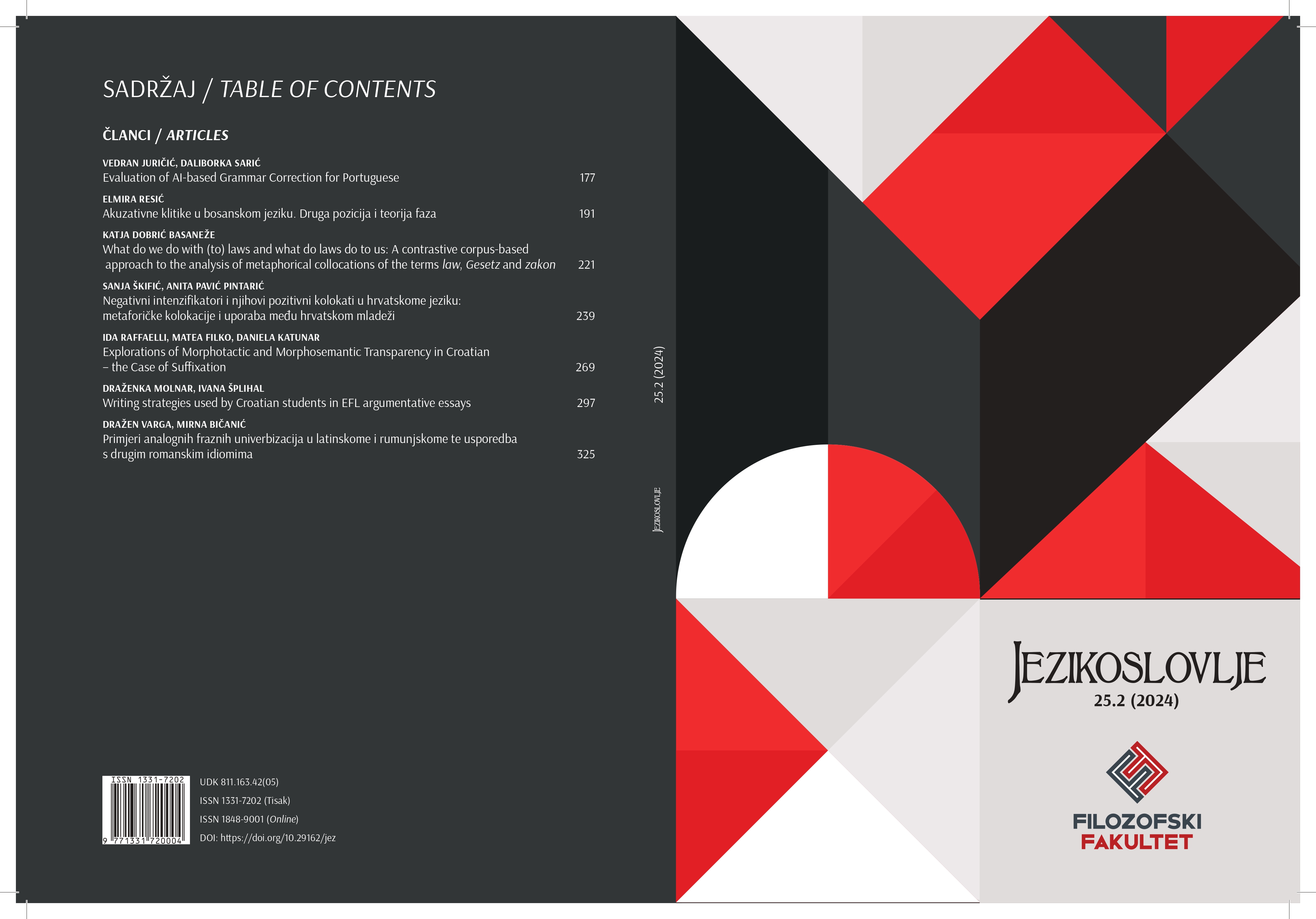Explorations of Morphotactic and Morphosemantic Transparency in Croatian – the Case of Suffixation
Explorations of Morphotactic and Morphosemantic Transparency in Croatian – the Case of Suffixation
Author(s): Ida Raffaelli, Matea Filko, Daniela KatunarSubject(s): Language studies, Language and Literature Studies, Theoretical Linguistics, Morphology, Semantics, Cognitive linguistics, South Slavic Languages
Published by: Filozofski fakultet, Sveučilište Josipa Jurja Strossmayera, Osijek
Keywords: morphotactic transparency; morphosemantic transparency; MS patterns model; suffixation; Croatian;
Summary/Abstract: In this paper, we present the first study on morphotactic and morphosemantic transparency in Croatian. The study was conducted via the Survey Monkey platform and consisted of a series of tasks in which participants were required to identify morphemes or segment words with differing levels of morphotactic (MT) and morphosemantic (MS) transparency, and to provide judgments on the relatedness of words based on morphological or semantic criteria. All the motivated words from the study were produced by suffixation and belong to the general lexicon of Croatian. 101 adult native speakers of Croatian participated in the study. The study was designed to investigate the following research questions: RQ1: are suffixes and base words more accurately identified in MT transparent words, RQ2: what role morphological relations play in assessing paradigmatic relatedness between words, and RQ3: are speakers able to distinguish between derived and non-derived words. Results of the study show that both MT and MS transparency are relevant notions that need to be taken into account for a comprehensive investigation of morphological processing of Croatian derivatives.
Journal: Jezikoslovlje
- Issue Year: XXV/2024
- Issue No: 2
- Page Range: 269-296
- Page Count: 28
- Language: English

